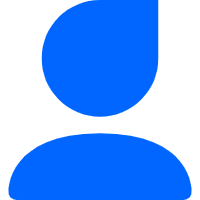1引言
我们大部分看到的图片一般是水平或者竖直的,我们看看如何在 R 里面绘制弧形的图片。
我们读取图片以后会转化为一个颜色矩阵,也就是每个矩阵位置代表一个像素点,然后再把这些像素点作为颜色填充在弧形的矩形内就可以了。
2探索
读取图片:
library(jjAnno)
library(grid)
img1 <- system.file("extdata/animal-img/", "1.jpg", package = "jjAnno")
image <- magick::image_read(img1)然后转化为颜色矩阵:
img.raster <- data.frame(as.matrix(as.raster(image)))
dim(img.raster)
# [1] 640 640
head(img.raster[1:3,1:3])
# X1 X2 X3
# 1 #77a3bcff #78a4bdff #78a4bdff
# 2 #77a3bcff #78a4bdff #78a4bdff
# 3 #77a3bcff #78a4bdff #78a4bdff我们可以直接那这个画图:grid.newpage()
pushViewport(viewport(width = 0.5,height = 0.5))
grid.rect()
grid.raster(image = as.matrix(img.raster),width = 1,height = 1)
grid.xaxis()
grid.yaxis()
有了这些探索,我们可以借助 arcRectGrob 来绘制环形的图像,不过感觉运行很慢,按理说也就是不到 1000×1000 的矩阵而已,难道是 arcRectGrob 计算慢的问题?。
# func test
img1 <- system.file("extdata/animal-img/", "1.jpg", package = "jjAnno")
img2 <- system.file("extdata/animal-img/", "2.jpg", package = "jjAnno")
img3 <- system.file("extdata/animal-img/", "3.jpg", package = "jjAnno")
img4 <- system.file("extdata/animal-img/", "4.jpg", package = "jjAnno")
img5 <- system.file("extdata/animal-img/", "5.jpg", package = "jjAnno")
img6 <- system.file("extdata/animal-img/", "6.jpg", package = "jjAnno")
img.lst <- c(img1,img2,img3,img4,img5,img6)
start <- c(0,60,120,180,240,300)
newpage()
lapply(seq_along(img.lst), function(x){
image <- magick::image_read(img.lst[x])
grid.draw(arcRasterGrob(raster = image,
start = start[x],end = start[x] + 50,
r0 = 0.5,r1 = 1))
})
然后是相关代码:arcRasterGrob <- function(raster = NULL,
start = 0,end = 90,
r0 = 0.5,r1 = 1,
x0 = 0,y0 = 0,
border.col = NA,
scaling = 0.1,
extend.xscale = 0.05,
extend.yscale = 0.05,
clock.wise = FALSE,
...,
name = NULL,
gp = NULL, vp = NULL){
lst <- list(raster = raster,
start = start,end = end,
r0 = r0,r1 = r1,
x0 = x0,y0 = y0,
clock.wise = clock.wise,
extend.xscale = extend.xscale,
extend.yscale = extend.yscale,
name = name, gp = gp, vp = vp,
cl = "arcRasterGrob")
do.call(gTree,lst)
}
makeContent.arcRasterGrob <- function(x){
g <- .arcRasterGrob(raster = x$raster,
start = x$start,end = x$end,
r0 = x$r0,r1 = x$r1,
x0 = x$x0,y0 = x$y0,
clock.wise = x$clock.wise,
extend.xscale = x$extend.xscale,
extend.yscale = x$extend.yscale,
name = x$name, gp = x$gp, vp = x$vp)
grid::setChildren(x, children = g$children)
}
.arcRasterGrob <- function(raster = NULL,
start = 0,end = 90,
r0 = 0.5,r1 = 1,
x0 = 0,y0 = 0,
border.col = NA,
scaling = 0.1,
extend.xscale = 0.05,
extend.yscale = 0.05,
clock.wise = FALSE,
name = NULL,
gp = NULL, vp = NULL,...){
# extend scale
extend.theta <- (end - start)*extend.xscale
start_ed <- start + extend.theta
end_ed <- end - extend.theta
extend.radias <- (r1 - r0)*extend.yscale
r0_ed <- r0 + extend.radias
r1_ed <- r1 - extend.radias
# load raster data
img.raster <- data.frame(as.matrix(grDevices::as.raster(raster)))
raster <- resize_image(img.raster,
w = ncol(img.raster)*scaling,
h = nrow(img.raster)*scaling)
# rescale data range
nr <- nrow(raster)
nc <- ncol(raster)
scale.y <- rev(scales::rescale(seq(0,nr,1),to = range(r0_ed,r1_ed)))
y.min <- scale.y[1:(length(scale.y) - 1)]
y.max <- scale.y[2:length(scale.y)]
scale.x <- rev(scales::rescale(seq(0,nc,1),to = range(start_ed,end_ed)))
x.min <- scale.x[1:(length(scale.x) - 1)]
x.max <- scale.x[2:length(scale.x)]
# ============================================================================
# draw raster grobs
rect.list <- gList()
for (i in 1:nc) {
rect.grob <- arcRectGrob(xmin = x.min[i],xmax = x.max[i],
ymin = y.min,ymax = y.max,
r0 = y.min,r1 = y.max,
x0 = x0,y0 = y0,
start = x.min[i],end = x.max[i],
clock.wise = clock.wise,
extend.xscale = 0,
extend.yscale = 0,
polygon.gp = gpar(fill = raster[,i],col = border.col))
rect.list <- gList(rect.list,rect.grob)
}
# ============================================================================
# combine grobs
# ============================================================================
grid::gTree(children = grid::gList(rect.list),
name = "arcRasterGrob")
}
# note: from circlize package
resize_image = function(m, w, h = round(w*(ncol(m)/nrow(m)))) {
w0 = nrow(m)
h0 = ncol(m)
w_ratio = w0/w
h_ratio = h0/h
# Do resizing -- select appropriate indices
if(length(dim(m)) == 2) {
out = m[ ceiling(w_ratio* 1:w), ceiling(h_ratio* 1:h)]
} else {
out = m[ ceiling(w_ratio* 1:w), ceiling(h_ratio* 1:h), , drop = FALSE]
}
return(out)
}arcRectGrob 的代码:
.arcRectGrob <- function(xmin = NULL,xmax = NULL,
ymin = NULL,ymax = NULL,
start = 0,end = 360,
r0 = 0.5,r1 = 1,
x0 = 0,y0 = 0,
polygon.gp = NULL,
n = 100,clock.wise = FALSE,
extend.xscale = 0.05,
extend.yscale = 0.05,
xscale = NULL,
yscale = NULL,
...,
name = NULL,
gp = NULL, vp = NULL){
# check length
if(length(ymin) == 1 & length(ymax) == 1){
ymin <- rep(ymin,length(xmin))
ymax <- rep(ymax,length(xmax))
}
if(length(xmin) == 1 & length(xmax) == 1){
xmin <- rep(xmin,length(ymin))
xmax <- rep(xmax,length(ymax))
}
# extend scale
extend.theta <- (end - start)*extend.xscale
start_ed <- start + extend.theta
end_ed <- end - extend.theta
extend.radias <- (r1 - r0)*extend.yscale
r0_ed <- r0 + extend.radias
r1_ed <- r1 - extend.radias
# =============================
# check sector x,y scale
if(is.null(yscale)){
r.scale <- range(c(ymin,ymax))
}else{
r.scale <- yscale
}
if(is.null(xscale)){
thata.scale <- range(c(xmin,xmax))
}else{
thata.scale <- xscale
}
# =============================
# rescale data range
scale.y <- scales::rescale(c(ymin,ymax),to = range(r0_ed,r1_ed),from = r.scale)
rect.r0 <- scale.y[1:length(ymin)]
rect.r1 <- scale.y[(length(ymin) + 1):length(scale.y)]
# check direction
if(clock.wise == TRUE){
scale.x <- scales::rescale(c(xmin,xmax),to = 2*pi - range(as.radian(start_ed),as.radian(end_ed)),
from = thata.scale)
}else{
scale.x <- scales::rescale(c(xmin,xmax),to = range(as.radian(start_ed),as.radian(end_ed)),
from = thata.scale)
}
rect.start <- scale.x[1:length(xmin)]
rect.end <- scale.x[(length(xmin) + 1):length(scale.x)]
if(clock.wise == TRUE){
new.start <- rect.start
new.end <- rect.end
}else{
new.start <- as.radian(end) - (rect.start - as.radian(start))
new.end <- new.start - (rect.end - rect.start)
}
# loop create coordinates
lapply(seq_along(rect.r0), function(x){
theta <- seq(new.start[x], new.end[x], length = n)
# ==============================================
# inner
# ==============================================
rin <- rect.r0[x]
if(rin == 0){
xp0 = x0;yp0 = y0
}else{
xp0 <- x0 + rin*cos(theta)
yp0 <- y0 + rin*sin(theta)
}
# ==============================================
# outer
# ==============================================
rout <- rect.r1[x]
xp1 <- x0 + rout*cos(theta)
yp1 <- y0 + rout*sin(theta)
rect.df <- data.frame(x = c(xp0,rev(xp1)),y = c(yp0,rev(yp1)),
id = x,
group = rep(c("inner","outer"),c(length(xp0),length(xp1))))
return(rect.df)
}) %>% do.call("rbind",.) -> all.df
# grobs
polygon.grob <- polygonGrob(x = all.df$x,y = all.df$y,
id = all.df$id,
gp = polygon.gp,
default.units = "native",
name = "polygon")
# ============================================================================
# combine grobs
# ============================================================================
grid::gTree(children = grid::gList(polygon.grob),
name = "arcRectGrob")
}3结尾
路漫漫其修远兮,吾将上下而求索。
欢迎加入生信交流群。加我微信我也拉你进 微信群聊 老俊俊生信交流群 (微信交流群需收取 20 元入群费用,一旦交费,拒不退还!(防止骗子和便于管理)) 。QQ 群可免费加入, 记得进群按格式修改备注哦。
声明:文中观点不代表本站立场。本文传送门:https://eyangzhen.com/373428.html




